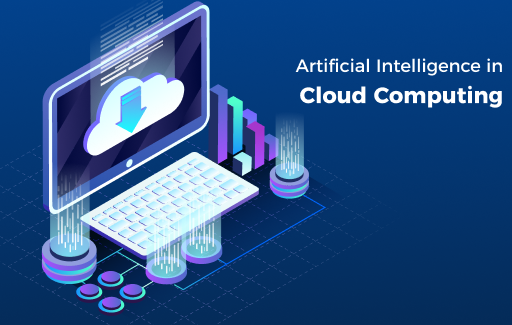Scalability, security, and resource management can all be greatly improved with the integration of AI (Artificial Intelligence) with cloud services. The following are some crucial ways that cloud services and AI can be combined to accomplish these goals:
1. Scalability:
a. Auto-scaling: AI-driven auto-scaling can dynamically adjust computing resources based on real-time demand. AI algorithms can analyse historical data, user patterns, and system metrics to predict when scaling is needed, helping to ensure that your applications can handle traffic spikes efficiently.
b. Load Balancing: AI can optimize load balancing by distributing traffic intelligently across multiple servers or regions. It can adapt to changing traffic patterns and redirect traffic to less busy servers or regions, improving performance and reducing downtime.
c. Predictive Scaling: AI can predict future resource requirements and scale up or down accordingly. This proactive approach helps in preventing performance bottlenecks and minimizing over-provisioning costs.
2. Security:
a. Anomaly Detection: AI can identify abnormal behaviour in your cloud environment, such as unauthorized access or unusual data transfer patterns. It can trigger alerts or automatically take corrective actions to mitigate security threats.
b. Intrusion Detection and Prevention: AI-powered intrusion detection systems can continuously monitor network traffic and identify potential threats or malicious activities. They can block or quarantine suspicious entities to protect your cloud resources.
c. User Authentication: AI can enhance user authentication through multi-factor authentication (MFA) and adaptive access controls. It can analyse user behaviour patterns to detect unauthorized access attempts.
d. Vulnerability Scanning: AI can perform automated vulnerability scans on cloud instances and applications, identifying weaknesses that may be exploited by attackers. It can then recommend and even implement security patches.
3. Resource Management:
a. Cost Optimization: AI can analyse cloud resource usage patterns and recommend cost-saving strategies, such as reserved instance purchases, instance size optimizations, or even serverless architecture adoption.
b. Resource Allocation: AI can allocate resources optimally based on workload requirements. It can dynamically assign CPU, memory, and storage resources to applications in real-time, ensuring efficient resource utilization.
c. Performance Optimization: AI-driven performance monitoring and tuning can identify bottlenecks or areas of improvement in your cloud infrastructure. It can suggest configuration changes to enhance application performance.
d. Capacity Planning: AI can assist in long-term capacity planning by analysing historical usage data and predicting future resource needs. This helps in avoiding resource shortages during peak periods.
4. Automation:
a. Workflow Automation: AI-powered automation can streamline routine tasks, such as provisioning and de-provisioning resources, managing backups, and handling error recovery. This reduces manual effort and human error.
b. Self-Healing Systems: AI can enable self-healing systems that detect and automatically recover from failures or errors without human intervention, increasing system reliability.
5. Data Analytics:
a. Data Insights: AI and machine learning can analyse large volumes of data generated by cloud services to provide valuable insights for decision-making, business intelligence, and predictive analytics.
b. Real-time Monitoring: AI-driven real-time monitoring and analysis can identify performance anomalies or issues before they impact end-users, improving the overall user experience.
6. Compliance and Governance:
a. Policy Enforcement: AI can enforce compliance policies and governance rules within your cloud environment. It can automatically detect and remediate policy violations.
b. Audit Trails: AI can maintain detailed audit logs and compliance reports, simplifying the process of demonstrating adherence to regulatory requirements.
In summary, integrating AI with cloud services can result in a more agile, secure, and efficient cloud infrastructure. It empowers organizations to harness the power of data and automation to optimize resources, enhance security, and deliver better performance to users. However, it’s essential to carefully plan and implement AI integrations to align with your specific business objectives and requirements.
